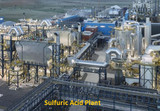Blog Posts
The Crucial Role of Analytical Standards in Health, Disease, and Commerce
Background
The analysis of chemicals in samples and its importance in society can not be understated, and the instrumental analysis techniques used across all fields of science rely on the use of accurate and pure materials called analytical standards-substances and chemicals used to define unknown compounds in a mixture and to accurately determine their concentrations.
Analytical standards are used for determining wheth
…
10th Dec 2022
New Year's Safety Resolutions and OSHA's Top 10 Violations of 2022
Here at CP Lab Safety, we endorse safety all day, every day. We believe safety in the workplace should never be taken lightly, and that there is always room for improvement. We’ve taken OSHA’s top 10 safety violations of 2022 and turned them into a handy list of easy New Year’s resolutions. Make safety a priority this year, and make a positive difference in your company. Small steps, like taking a few extra hours each year for safety training, can make a huge impact and literally save lives. Her
…
1st Dec 2022
Water: The Substance You Thought You Knew
CAS Number [7732-18-5]
One Molecule Many Molecules
Formula H20 (18.02 amu)
Water is essential to all life, comprising between 70-90% of all organisms, and is the medium through which biochemical reactions take place. About 71% of the earth is covered by seawate
…
29th Nov 2022
The Wonders of Sulfuric Acid
The most used chemical on Earth, besides water, is Sulfuric Acid,
H2SO4, and the wealth of nations parallels their ability
to produce sulfuric acid, where the more produced the better and stronger their
economies are as an industrialized nation. &nbs
…
14th Nov 2022
The Science of Titration Analysis
Titration is the process by which an unknown quantity of a compound is found by adding it to a reagent which it reacts completely with in a known amount. This reagent, the titrant, is measured exactly and when an added indicator changes color, the titrant amount and its concentration determine the unknown compound concentration. It’s the change in the indicator that signals the reaction between the compound and titrant is complete and when its complete its also called the endpoint.
In its
…
2nd Nov 2022



